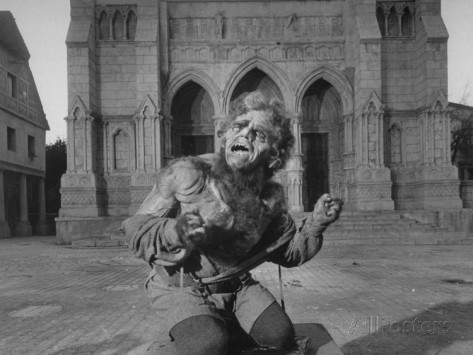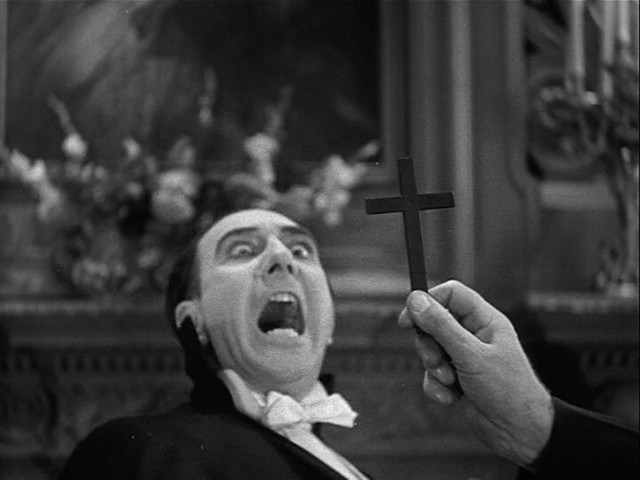This post originally appeared at Dappled Things.
 Exactly two years ago, I was honored to inaugurate the Deep Down Things blog with a post about why I love Halloween. I suppose it is only fitting, then, that my debut novel, Jennifer the Damned (which is about vampires), will be released this year on Halloween. The Eve of All Hallows and I seem destined to be intertwined–though not forever, I hope. I hope that the day of ghouls and goblins is only preparation for the Communion of All Saints. Yet if I ever do enter the heavenly kingdom, I truly will have come there by a road booby-trapped with monsters. In my everyday life, I pray this will remain only a metaphor; that I shall face the monsters of my sins and, by the grace of God, no others. But in my literary life, it was only by way of monsters that I came to understand the power of fiction to shape our souls. “[T]rue art is moral: it seeks to improve life, not debase it. It seeks to hold off, at least for a while, the twilight of the gods and us.”[i] I learned this principle intuitively long before I ever heard it stated, and one perhaps surprising source of my insight was the great tales of Gothic horror written in the nineteenth century. Long before I had ever heard of writers like G.K. Chesterton, Flannery O’Connor, or even Dante, my feet had been set firmly on the path toward weaving my most deeply-held beliefs into fiction by tales that teemed with other-worldly gore. I have never had much interest in zombies, or giant man-eating creatures from the deep. I have always preferred the sentient, rational, and emotional monsters, the ones who are almost (but not quite) human. These are the monsters in whom many great writers found a vehicle to create fiction that is not merely moral, but Catholic in both senses of the word: stories that explore the universal human condition and also great Christian themes.
Exactly two years ago, I was honored to inaugurate the Deep Down Things blog with a post about why I love Halloween. I suppose it is only fitting, then, that my debut novel, Jennifer the Damned (which is about vampires), will be released this year on Halloween. The Eve of All Hallows and I seem destined to be intertwined–though not forever, I hope. I hope that the day of ghouls and goblins is only preparation for the Communion of All Saints. Yet if I ever do enter the heavenly kingdom, I truly will have come there by a road booby-trapped with monsters. In my everyday life, I pray this will remain only a metaphor; that I shall face the monsters of my sins and, by the grace of God, no others. But in my literary life, it was only by way of monsters that I came to understand the power of fiction to shape our souls. “[T]rue art is moral: it seeks to improve life, not debase it. It seeks to hold off, at least for a while, the twilight of the gods and us.”[i] I learned this principle intuitively long before I ever heard it stated, and one perhaps surprising source of my insight was the great tales of Gothic horror written in the nineteenth century. Long before I had ever heard of writers like G.K. Chesterton, Flannery O’Connor, or even Dante, my feet had been set firmly on the path toward weaving my most deeply-held beliefs into fiction by tales that teemed with other-worldly gore. I have never had much interest in zombies, or giant man-eating creatures from the deep. I have always preferred the sentient, rational, and emotional monsters, the ones who are almost (but not quite) human. These are the monsters in whom many great writers found a vehicle to create fiction that is not merely moral, but Catholic in both senses of the word: stories that explore the universal human condition and also great Christian themes.
Mary Shelley was the first to introduce me to the literary power of the monster. It is impossible to read Frankenstein as anything but a cautionary moral tale, although plenty of critics have tried. Shelley herself says in the Preface, “I am by no means indifferent to the manner in which whatever moral tendencies exist in the sentiments of the characters shall affect the reader… [especially] the exhibition of the amiableness of domestic affection, and the excellence of universal virtue.” Victor Frankenstein is even more explicit about the didactic intention of his story; he only agrees to tell it so that Robert Walton “may deduce an apt moral from my tale.” Frankenstein is pure parable. For Victor, it is a tale of the horror that results when man attempts to play the role of God; but, for the Monster, it is a tale about nothing more nor less than the Fall, of a creature’s complete dependence upon the love of his creator and the disaster that accompanies any breach of that love. He even says so:
Like Adam, I was apparently united by no link to any other being in existence; but his state was far different from mine in every other respect. He had come forth from the hands of God a perfect creature, happy and prosperous, guarded by the especial care of his Creator; he was allowed to converse with, and acquire knowledge from, beings of a superior nature: but I was wretched, helpless, and alone. Many times I considered Satan as the fitter emblem of my condition; for often, like him, when I viewed the bliss of my protectors, the bitter gall of envy rose within me.
For the Monster (as for Man), sin is inspired by his separation from ultimate goodness. However, as a creature made by man, ultimate goodness for the Monster resides in man’s love and acceptance–that is, in communion with man. Alas, man’s goodness is not good enough to sustain him. The Monster’s story is a glimpse of what would become of us all if our Creator were not infinitely merciful. The Monster’s fate is our fate but for the “especial care” of the One who made us. We are lucky, the Monster tells us; we have a better god than Victor Frankenstein.
What Mary Shelley began to teach me in Frankenstein, Victor Hugo continued in The Hunchback of Notre Dame. My heart weeps every time I remember that Victor Hugo died as an apostate and a vehement anti-Catholic. But the Hugo of 1831–the Hugo of Notre-Dame–had not yet begun dabbling in séances and writing anti-clerical invectives. The Hugo who wrote Notre-Dame may not have been devout, but he made the church (not the hunchback) the title character of his novel, Notre-Dame de Paris. This young Hugo saw that in the Church, monsters and beautiful maidens alike can find sanctuary.
 The lessons of Notre-Dame de Paris are not nearly as cut-and-dried as those of Frankenstein (though plenty of people will argue that Frankenstein’s are not as cut-and-dried as I see them.) Notre-Dame is a more complicated novel, with many more characters and plot lines. For now, I will consider only the implications of the monster and his story. Quasimodo is terribly deformed, crippled by various handicaps yet endowed with prodigious strength, and his mysterious birth is surrounded by stories of changelings and devils. But Hugo never quite commits to the theory of the hunchback as a supernatural monster. Quasimodo remains ostensibly human, and as such his status vis-à-vis things divine is no different from our own. (“My misfortune is that I still resemble a man too much. I should like to be wholly a beast like that goat.”) Rather, Quasimodo is the consummate outcast, a representation of all the poor and orphaned, the lowly whom Christ called his followers to serve. The Christians of Paris do not heed the call, but Notre-Dame–the Church herself–does. Left alone in the succor of the Church’s bosom, Quasimodo becomes deaf, literally, to the scorn of the world. Nothing remains for him but the joy of his personal heaven:
The lessons of Notre-Dame de Paris are not nearly as cut-and-dried as those of Frankenstein (though plenty of people will argue that Frankenstein’s are not as cut-and-dried as I see them.) Notre-Dame is a more complicated novel, with many more characters and plot lines. For now, I will consider only the implications of the monster and his story. Quasimodo is terribly deformed, crippled by various handicaps yet endowed with prodigious strength, and his mysterious birth is surrounded by stories of changelings and devils. But Hugo never quite commits to the theory of the hunchback as a supernatural monster. Quasimodo remains ostensibly human, and as such his status vis-à-vis things divine is no different from our own. (“My misfortune is that I still resemble a man too much. I should like to be wholly a beast like that goat.”) Rather, Quasimodo is the consummate outcast, a representation of all the poor and orphaned, the lowly whom Christ called his followers to serve. The Christians of Paris do not heed the call, but Notre-Dame–the Church herself–does. Left alone in the succor of the Church’s bosom, Quasimodo becomes deaf, literally, to the scorn of the world. Nothing remains for him but the joy of his personal heaven:
His cathedral was enough for him. It was peopled with marble figures of kings, saints and bishops who at least did not laugh in his face and looked at him with only tranquility and benevolence. The other statues, those of monsters and demons, had no hatred for him – he resembled them too closely for that. It was rather the rest of mankind that they jeered at. The saints were his friends and blessed him; the monsters were his friends and kept watch over him. He would sometimes spend whole hours crouched before one of the statues in solitary conversation with it. If anyone came upon him then he would run away like a lover surprised during a serenade.
Of course, for Quasimodo, the sanctuary of the church proves to be temporal and fleeting. Claude Frollo, the priest, a man whose duty is to act in persona Christi, betrays it. Just as in Frankenstein, a human usurps divine power for his own selfish ends and thereby rends from himself and everyone around him every possibility of happiness. Notre-Dame de Paris is a book where the priest’s corruption runs so deep, it pollutes even the healing power of the Church–a sobering reflection that still resonates in our own day. But Notre-Dame is also a book where we discover that the outcast can be the most righteous person among us. Quasimodo’s sheltering of Esmeralda inside the cathedral is virtually the only action in the entire book that is not motivated by selfishness. Quasimodo proves that sometimes, only the deaf man still knows how to listen to the pealing bells of conscience.
These books of ghastly horror, one written by the daughter and wife of avowed atheists whose own convictions no one seems to know, and the other written by a soon-to-be ex-Catholic, were among the first books ever to teach me that fiction could be the laboratory of the soul, the place where we experiment in order to learn about sin and death, righteousness and salvation.
Bram Stoker may have been baptized in the Church of Ireland, but he respected the specifically Catholic character of the enmity between vampires and humans. The Catholic Dr. Van Helsing serves as the spiritual guide for the novel’s band of vampire-hunting heroes. At every step, he proves the potency of his own Church’s teachings while his Protestant brethren blithely follow. (I have always found it strange that Johnathan, Dr. Seward, et. al. feel no impulse to convert after witnessing the miracles performed by the consecrated Host.) There is no monster more specifically tied to the Holy Roman Church than the vampire. Quite apart from the fact that the weapons used to ward off vampires usually have Catholic associations–crucifixes, holy water, and most importantly the Host–the very nature of the vampire marks him as “engaging in an anti-sacrifice and an Anti-Eucharist[.]”[ii] Vampires do what Catholics do: they drink blood in order to achieve eternal life. “Dracula is the Apocalyptic Anti-Christ who comes to collect souls and set up an alternative eternity to that promised in the New Testament.”[iii]
It is only logical, then, that Dracula is ultimately vanquished only because the most saintly character in the novel, Mina Harker, takes on his corrupted nature. Mina is not quite a Christ-figure because Christ willingly assumed the form of a slave; Mina is forced into doing so. Dracula forces her to drink his blood, thus binding her to himself with evil mystic power. But as soon as Mina realizes that the bond is a two-way street, granting her (limited) access to see through Dracula’s eyes, she gives herself over to the role of intermediary between the righteous and the damned, and she shifts the focus of the hunters from saving Dracula’s victims to saving Dracula himself:
I know that you must fight–that you must destroy… but it is not a work of hate. That poor soul who has wrought all this misery is the saddest case of all. Just think what will be his joy when he too is destroyed in his worser part that his better part may have spiritual immortality.
Even Dracula, a centuries-old undead demon who has stolen uncounted lives, must not be destroyed in his entirety but only in his “worser part.” Even Dracula must be pitied; even Dracula must be saved.
It really should not come as a surprise that stories about monsters can be rich with Christian meaning. There is only one story that matters in Christianity: Adam’s first sin leads to humanity’s demise, but Jesus comes to save us through His death and resurrection. It is a blood-soaked tale that features more than its fair share of monstrosity. And there is this: as ridiculous and devoid of metaphysical meaning as most modern horror stories may be, horror remains the one genre in our “post-Christian” society where it is not laughable to call upon Christ and the Church in one’s hour of need. When the monsters come, no one flees to the protection of the local non-denominational minister. When the monsters come, our society still knows that only the fullness of Truth entrusted to the Bride of Christ can challenge them. Our job as Catholics is not to convince the world that such hocus-pocus is beneath us. Our job is to convince them that the monsters are real. The monsters live inside each and every one of us: malformed, lonely, hopeless, vengeful monsters with their fangs latched deep into our hearts. Once we recognize them for what they really are, we know, deep in our bones, that it is only Christ crucified who can drive them out.
[i] John Gardner, On Moral Fiction
[ii] Eleanor Bourg Donlon, Cinemanemia or Revenge of the Bloodsucked
[iii] E.B.D., Cinemanemia
Karen Ullo is the author of Jennifer the Damned, to be released on Halloween, 2015 by Wiseblood Books. To find out more, go to www.karenullo.com.


![Spanish Dracula Repelled by Crucifix[5]](https://karenullo.com/wp-content/uploads/2015/10/spanish-dracula-repelled-by-crucifix5.jpg?w=300)
Recent Comments